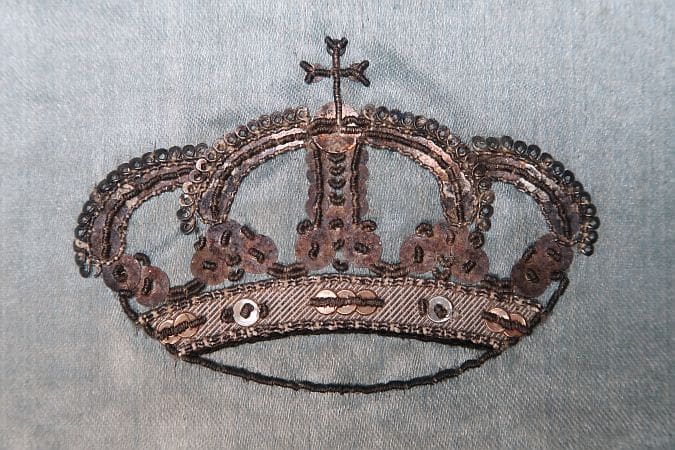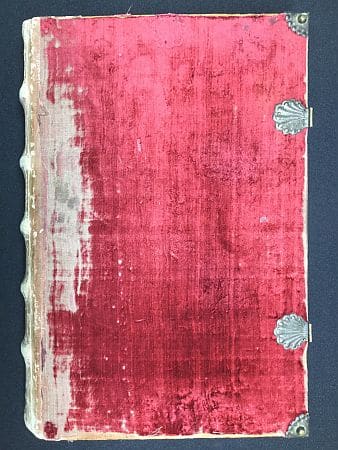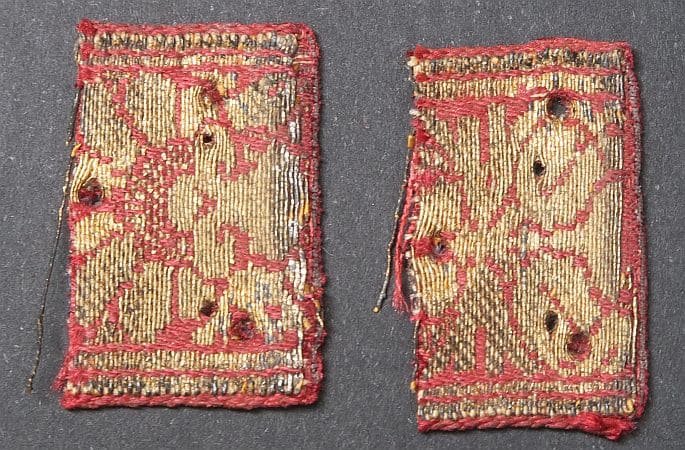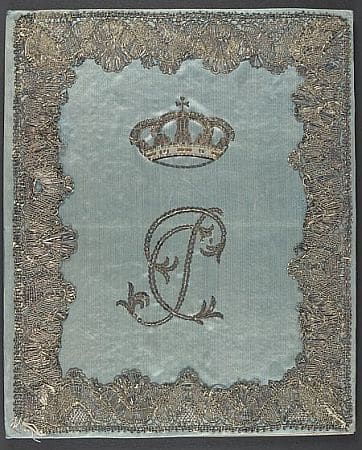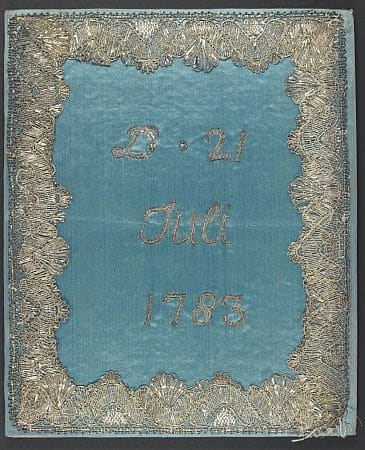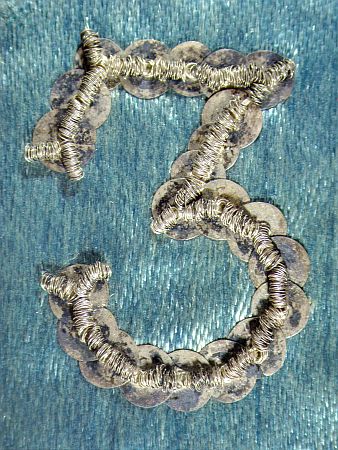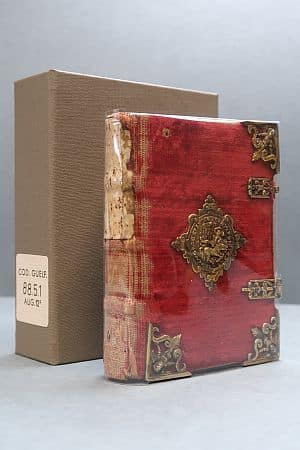11 May 2022
The heavy bronze door at the entrance to the Augusteerhalle opens up to reveal towering bookshelves. The visitor’s roaming gaze settles on the historical treasury of books, all of which are bound in pale parchment or leather – or so it seems. Yet this initial impression is deceptive. A far more valuable material was chosen as the cover for just a few well-hidden books: silk.
Brightly coloured silk fabrics have long been extremely popular. Depending on how the yarn is processed, a loom can create a wide range of surfaces such as smooth and shiny Etles silk or the softer silk velvet. Its material qualities and costly production processes made silk an option for binding particularly high-quality books from the Middle Ages onwards. Dedicatory volumes, for example, were often bound with fine materials, both as a tribute to their distinguished recipients and as an extravagant eye-catching feature. Visual effects would be used to lend gifts a prestigious appearance; these could involve a splendid silk binding embossed with gold or silver, finely worked fittings, and in rare cases they were even adorned with detailed (metalwork) embroidery. In the case of the dedicatory volume for King Matthias Corvinus of Hungary (1442–1490) shown here, despite the damage to the red silk velvet cover, we can get some idea of the magnificent original effect of the binding – thanks to the remaining brocade fragments, which date back to an earlier clasp.
The volume shown below, bound in blue Etles silk, is part of the collection of bindings at the Herzog August Bibliothek. Its elaborate decoration adheres to the notions of courtly prestige in the late 18th century. The monogram with the intertwining letters ‘P’ and ‘C’ on the front cover, in conjunction with the ducal crown hovering above it, identifies Philippine Charlotte of Prussia (1716–1801) as the recipient of this luxurious treasure. She was a sister of Frederick the Great who became Duchess of Braunschweig-Lüneburg and Princess of Braunschweig-Wolfenbüttel when she married Herzog Karl I in 1733.
The combination of letters and numerals on the back cover, ‘D – 21 July 1783, refers to the reason behind the gift, which is revealed by the book’s title: Empfindungen der reinen und wahren Freude des itzigen Besitzers von Vechelde bey der fünfzigjährigen frohen und glücklichen Wiederkehr des ein und zwanzigsten Julius im Jahre 1783 (Sensations of pure and true joy expressed by the present owner of Vechelde at the fiftieth happy and joyful annual recurrence of the twenty-first day of July in the year 1783). The book, a mere four pages long, contains a poem eulogising the duchess. Not only the contents of the book but also the choice of writing surface make clear that the interior was on a par with the magnificent binding. For this was no normal handmade paper: both sides of the pages were coated with undyed silk before printing. The homage was probably written by the ‘owner of Vechelde’ – Ferdinand of Braunschweig-Lüneburg, who was a brother of Karl I – in honour of his sister-in-law Philippine Charlotte, to mark the fiftieth anniversary of her arrival in the Duchy of Brunswick.
Silk is a costly material with real visual impact, but it presents particular challenges from the conservatorial perspective because it is significantly more sensitive to environmental influences or being handled than other more robust book-binding materials such as leather or parchment. Gloves have to be worn when turning the inside pages with glued-on silk so that particles of dirt or sweat are not transferred to the creamy white silk. In contrast to paper, which is subject to additional sizing during the manufacturing process, the open structure of silk fibres immediately absorbs moisture or impurities. It is virtually impossible to remove stains afterwards.
A further danger for silk binding is exposure to light, which bleaches the material and makes the fibres brittle. The blue silk on the front and reverse covers of the volume depicted here varies in its intensity, providing evidence of the irreversible damage wrought by light exposure. For this reason, all silk and silk velvet bindings in the HAB holdings are placed in a tailor-made slipcover and a closely fitting jacket made of ageing-resistant polyester film. The latter protects the sensitive binding materials when being handled, without concealing the opulently crafted embroidery.
It does mean that visitors to the Herzog August Bibliothek who are impressed by the tall bookshelves, dominated by pale leather and parchment, cannot see these rare treasures at second glance either, because they are hidden in protective packaging. One exception to this comes thanks to the anniversary exhibition We Make Books: the dedicatory volume mentioned above – Cod. Guelf. 43 Aug 2° – is on display in the Schatzkammer (Treasury) to the left of the Gospel Book of Henry the Lion and Matilda of England. If you can tear yourself away from the magnificently illuminated pages and focus on the edges of the book binding, you will catch at least a glimpse of red silk velvet on both of them.
